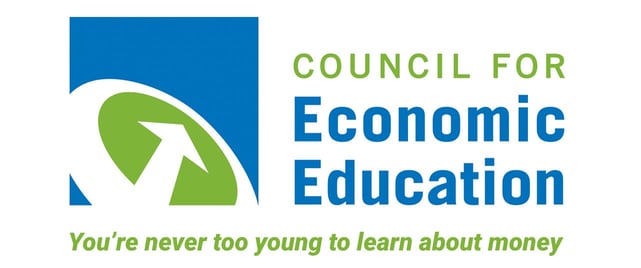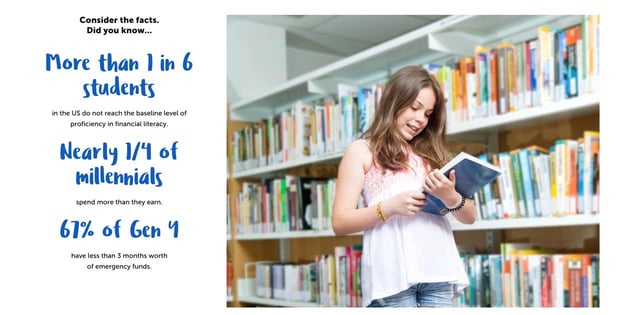
Our experts and industry insiders blog the latest news, studies and current events from inside the credit card industry. Our articles follow strict editorial guidelines.
In a Nutshell: The Council for Economic Education (CEE) provides extensive curricular and professional development resources to help teachers with the basics. It also engages students and families directly through competitions and financial literacy programs and produces digital resources for at-home use. Today, many K-12 students lack basic levels of proficiency in financial literacy. CEE encourages states to incorporate financial literacy requirements for graduation and works to ensure the values of financial responsibility reach all students and families.
As the global economy grows more complex, the gap between what people know about personal finance and what they need to know gets wider. Many Americans don’t understand how the economy works or the steps they can take to improve their financial standing.
Only 25 states require high school students to take an economics course to graduate, and only 23 require a course in personal finance.
These are some of the conclusions presented in the Council for Economic Education’s (CEE) 2022 Survey of the States, a comprehensive look into US K-12 economic and financial education.
CEE is the nation’s leading K-12 economic education advocate and resource provider. The organization aims to equip American students and families with tools to acquire personal finance and economic knowledge to live successfully in the global economy.

CEE launched soon after the US emerged from World War II and began competing with the Soviet Union. Stakeholders from government, education, and business were concerned about the rise of a communist superpower and wanted to ensure that children understood basic economics and the American financial system.
Today, CEE reaches more than 2 million students and families, and equips tens of thousands of teachers with classroom resources each year.
“The 2022 Survey of the States is a great tool for us to ensure that more and better financial and economic education is offered in every state and that every student has a guarantee of that education,” said Nan Morrison, the Council for Economic Education’s CEO.
Resources Include Personal Finance Standards
CEE’s impact on economic education starts with K-12 instructional and professional development resources, all created by qualified educators.
Its flagship resource, EconEdLink, is a searchable database of classroom-tested economic and personal finance materials. That database includes hundreds of free online lessons, videos, and interactive tools. And all EconEdLink lesson plans align with CEE’s voluntary national content standards — as well as most state standards.
EconEdLink’s professional development resources feature video collections on the basics of economics, personal finance, and financial fitness. It also includes webinars covering everything from economic fundamentals to the latest student engagement strategies.
In recent years, CEE’s mission has grown to incorporate personal finance, including a partnership with the Jump$tart Coalition for Personal Financial Literacy. CEE and Jump$tart issued a unified set of standards for personal financial education incorporating six topic areas: earning income, spending, saving, investing, managing credit, and managing risk.

According to Morrison, the new standards stress the relationship between budgeting and responsible credit use.
“I don’t think you can talk about credit without understanding how you allocate your money to things that are important to you,” she said.
Wise spending or borrowing decisions require prioritizing financial goals and understanding the downsides of using credit to satisfy short-term desires.
“It’s about understanding how to use credit responsibly,” Morrison said. “As we all should know, compound interest works in your favor when you’re saving but against you when you are not paying your bill on time.”
Tools and Initiatives Boost Economic Fitness
As CEE expanded its mission to personal financial responsibility, it also developed programs aimed directly at students and families.
Its long-standing initiatives include two popular student competitions. CEE’s National Economics Challenge produces 50 state champion teams that compete for a national title and cash prizes each year. The National Personal Finance Challenge does the same for teams demonstrating expertise in personal finance concepts, including saving, investing, earning income, making purchases, and using credit.
Another CEE program is Invest in Girls, which focuses on teaching young women about the basics of personal finance while introducing them to careers in finance.
“Training for a career in finance offers a good path to employment because it’s not just about working on Wall Street,” Morrison said. “Every town and business needs someone to keep track of the money, and if you’re comfortable doing that, you have a job.”
CEE also reaches people through Family-At-Home Financial Fun Packs. The program began a few years ago as family financial literacy nights held in classrooms for elementary school-age students, parents, and teachers.
When the COVID-19 pandemic eliminated those in-person opportunities, CEE converted the materials into free digital resources for at-home use.
“I’m pleased that when we did that, we thought about expenses. We didn’t want people to have to go out and buy things,” Morrison said. “We created exercises and activities that practically anyone could do at home with a pen or pencil, some paper, some coins, and a few items from around the house.”
Advocating for More Effective Education
Digital accessibility and inclusiveness are at the core of CEE’s mission. All CEE resources reflect the diverse cultures the organization serves and refrain from making cultural assumptions that aren’t relevant to all students.
CEE also acknowledges that teachers, students, and families consume content differently and that not everybody always has access to the same technology.
“On balance, doing things digitally is the current trend and we need to be responsive to that to remain relevant,” Morrison said.
Meanwhile, the 2022 Survey of the States indicates that, while progress has been made, the organization can do much more to help students and families achieve financial success.
“Still, less than half the states require students to take at least a semester of personal finance to graduate,” Morrison said.
According to Morrison, increasing those numbers is important because research shows that financial education in high school makes a difference. It leads to better credit scores, lower loan default rates, and broader access to college financing and scholarships.
Particularly compelling are indications that the effects are more significant for students from lower and moderate-income families. Morrison said although the data doesn’t explicitly indicate why that’s the case, financial education helps students get comfortable with discussing finances and reaching out for support.
“If you’re in a state that does not have a requirement for financial education, there’s a 16-point access gap to that education between kids from wealthier school districts and those from low- and moderate-income school districts,” Morrison said. “That’s real, and you would say that was big even if I cut it in half.”

![9 Best Credit Cards For Families ([updated_month_year]) 9 Best Credit Cards For Families ([updated_month_year])](https://www.cardrates.com/images/uploads/2022/09/Best-Credit-Cards-For-Families.jpg?width=158&height=120&fit=crop)
![6 Credit Cards for Students with Fair Credit ([updated_month_year]) 6 Credit Cards for Students with Fair Credit ([updated_month_year])](https://www.cardrates.com/images/uploads/2020/02/Credit-Cards-for-Students-with-Fair-Credit.jpg?width=158&height=120&fit=crop)
![4 Best Cash Back Credit Cards For Students ([updated_month_year]) 4 Best Cash Back Credit Cards For Students ([updated_month_year])](https://www.cardrates.com/images/uploads/2021/04/Cash-Back-Credit-Cards-For-Students.jpg?width=158&height=120&fit=crop)
![5 Best Gas Cards For Students ([updated_month_year]) 5 Best Gas Cards For Students ([updated_month_year])](https://www.cardrates.com/images/uploads/2022/03/Best-Gas-Cards-For-Students.jpg?width=158&height=120&fit=crop)
![5 Best Auto Loans For Students ([updated_month_year]) 5 Best Auto Loans For Students ([updated_month_year])](https://www.cardrates.com/images/uploads/2023/01/Auto-Loans-For-Students.jpg?width=158&height=120&fit=crop)
![7 Best Discover Cards For Students ([updated_month_year]) 7 Best Discover Cards For Students ([updated_month_year])](https://www.cardrates.com/images/uploads/2023/08/Best-Discover-Cards-For-Students-4.jpg?width=158&height=120&fit=crop)
